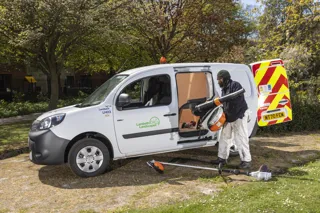Masternaut has launched MoveElectric, a new solution to support the management of company fleets as they transition from internal combustion engines (ICE) to electric vehicles (EVs).
MoveElectric enables fleet managers to identify which journeys could be carried out by an EV instead of an ICE vehicle, based on parameters which reflect business needs and working patterns.
By comparing real-time ICE data with that of EVs, Masternaut says businesses can understand which electric vehicles are most suitable for their fleets.
The MoveElectric tool’s use of comprehensive real-world data allows fleet managers to measure and demonstrate the wider benefits of the move to EVs, including efficiency, CO2 reduction and cost savings. This insight will also support the creation of data-led roadmaps to achieve the government-mandated shift to full electrification by 2030.
Analysis of data from more than 37,000 vehicles over a one year period, by Masternaut, found that UK fleet operators could replace 40% of their current light commercial vehicles with electric alternatives today, with daytime charging needed only exceptionally.
Specifically, the research used a range limit of 125 miles per day to assess the suitability to switch to electric, as this is currently a widely-offered range.
Masternaut says this transition from ICE fleets to EVs could reduce emissions by 8.3 million tons of CO2 per year, an equivalent to 7% of total CO2 emissions from transport in 2019. Making the switch to electric would also enable fleets to reduce fuel costs by 79% on their replaced ICE vehicles.
In London, the percentage of light commercial vehicles that can be electrified is even higher.
Alberto De Monte, business segment director OEM, EV and Sustainable Mobility at Masternaut, said: “Transitioning to electric is a logistical challenge and our customers need to be able to show the business case before making that change. The MoveElectric platform avoids the need to rely on estimates. Everything is calculated by reading information directly from vehicles currently in use. This allows us to give our customers a highly accurate understanding of what they can achieve without disrupting workflow or efficiency.
“Our research shows that it is already possible to move significant portions of existing fleets to EVs and that ‘range anxiety’ is, in many cases, unfounded. Early fleet planning is essential to realise the opportunities available to fleets and to prepare for the unavoidable deadline of 2030. Fleet operators are unlikely to incur any additional costs when transitioning to electric, as long as they follow the normal vehicle replacement cycle of 4-5 years."





















Login to comment
Comments
No comments have been made yet.